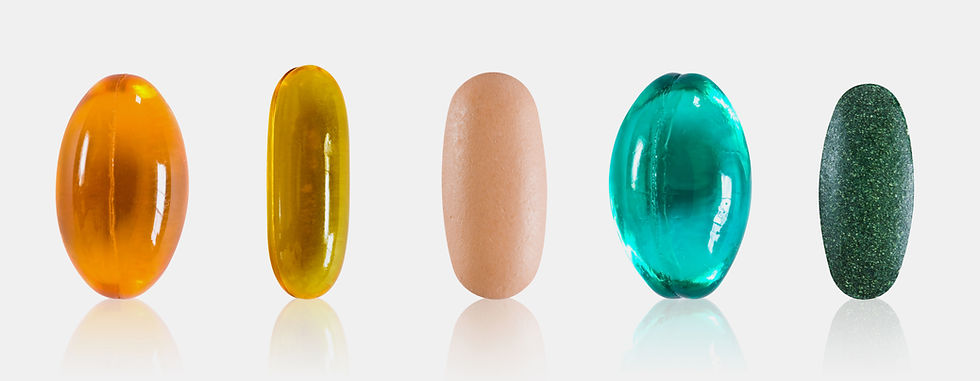Dining Out With Food Allergies
- Meg O'Rourke
- Jan 8, 2024
- 3 min read
On this week's episode of the Harmony With Food Radio show, we talk about getting back on track after the holidays, dining out with food allergies, and 6 vegetables that will make you feel great this year!
Get Back on Track in 2024
Have you tried everything but still can't lose weight? Are you exhausted all the time? Suffering from joint pain, headaches, and skin rashes but your doctor says your bloodwork looks great? You're not alone. I see clients like this in my practice every week, and I help them get to the bottom of their symptoms through testing.
It's 2024. The technology is here, so why not use it to get better results, faster? I do testing for food sensitivities and allergies, micronutrient levels, the microbiome, environmental toxins, and more to help you uncover what is going on beneath the surface.
Schedule a free 45-minute call with me using the button below to talk about which tests may be right for you.
Dining Out With Dietary Restrictions
Choosing a restaurant can be challenging if you, your partner, or a friend have food allergies or sensitivities. The number of food allergies is going up and 20% of people in urban countries have at least one food allergy or intolerance.
Tips for Selecting a Restaurant
When choosing a restaurant, look for farm-to-table restaurants that focus on whole, nutritious foods. These types of restaurants are likely to be more accommodating because their food is already more allergen-friendly.
If you have a specific sensitivity, like gluten, look for menus that mark gluten-free foods, or call the restaurant ahead of time to make sure they'll be able to prepare something for you.
How to Order
Most servers don't know the difference between food allergies, sensitivities, and intolerances. I find that you're better off just saying you have an allergy so you don't overcomplicate it.
Focus on What You Can Have
This tip is important not just for eating at restaurants, but all the time. Focus on what you can have instead of what you can't. Focusing on how good your meal is instead of wishing you were eating a plate of cheesy pasta is going to make your experience a lot better!
Bring Reinforcements
No restaurant is going to get it 100% right 100% of the time, so you always want to bring backup. If you have a true food allergy, you should always have an EpiPen on hand. If you have a food intolerance or sensitivity, digestive enzymes may help, and many of them are made to help with specific foods like gluten and dairy.

6 Anti-Inflammatory Vegetables
I don't believe in New Years resolutions, but I know that many of us are looking to get back on track in January after overindulging during the holidays. These vegetables will help you get that vibrant, full-of-energy feeling:
#1: Cabbage
Cabbage is so versatile and you can use it in everything from Caesar salad to casserole. Plus, it stays good in your fridge for 10 days. Cabbage is loaded with fiber, and purple cabbage can give us an extra dose of inflammation-fighting anthocyanins.
#2: Carrots
Carrots are high in Vitamin A and only cost about $1 per pound. They're a great side dish and if you eat the purple or red carrots, you'll get more of those anti-inflammatory anthocyanins!
#3: Leafy Greens
Leafy greens are filled with fiber, vitamins, and nutrients like folate, calcium, potassium, and magnesium. When picking out leafy greens you want to go with cruciferous varieties like kale, collard greens, chard, or arugula.
Leafy greens aren't just for salads. Try them in stir fries, soup, sauces, and more to get more of them in your diet.
#4: Brussels Sprouts
Brussels sprouts are a member of the cabbage family and are one of the most underrated vegetables for gut health. They are rich in Vitamin C, K, and folate, as well as in fiber. Try roasting them so they get crisp for a delicious side dish.
#5: Beets
Beets are filled with vitamins and antioxidants that help fight cancer and improve the circulation in our blood flow. Like brussels sprouts, these can get mushy when boiled or steamed, but you can roast them for a crispy exterior to make them really delicious!
#6: Cauliflower
Cauliflower is high in Vitamins C and K, and rich in fiber and antioxidants. It's gotten very popular over the last few years because there are so many ways you can make it! You can roast it, mash it, and even chop it up to resemble rice.




.png)


























Comments